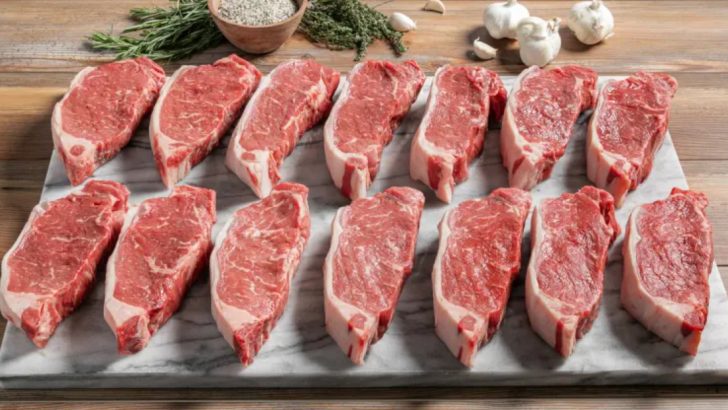Choosing the right cut of meat isn’t just about flavor—it’s also about safety and knowing what you’re paying for. But the meat section can be confusing, with shiny packages and tricky labels hiding not-so-fresh surprises.
A few quick clues can tell you when to pick up a pack—or put it back down fast.
These 15 red flags will help you shop smarter, safer, and with more confidence at the butcher’s counter or grocery aisle.
1. Gray Or Brown Coloring
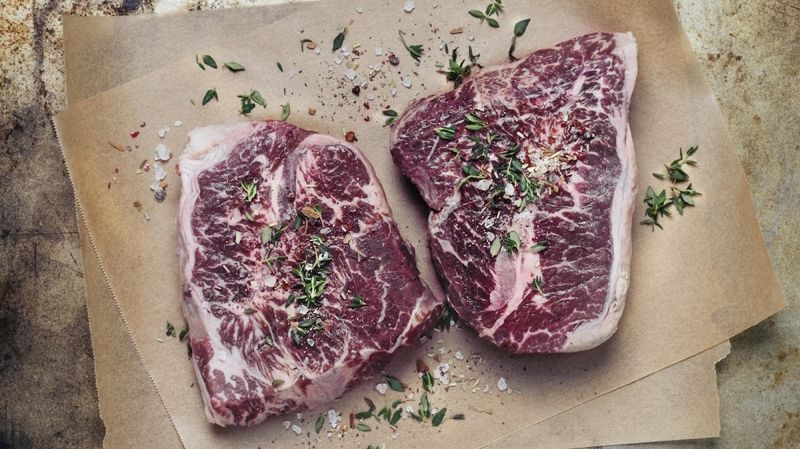
Flesh that’s turned gray or brown on the surface may be past its peak. Oxidation happens naturally, but too much is a red flag.
Bright red color signals freshness for beef, while pink or cream tones are better for poultry. If it looks dull, move along.
2. Slimy Or Sticky Texture
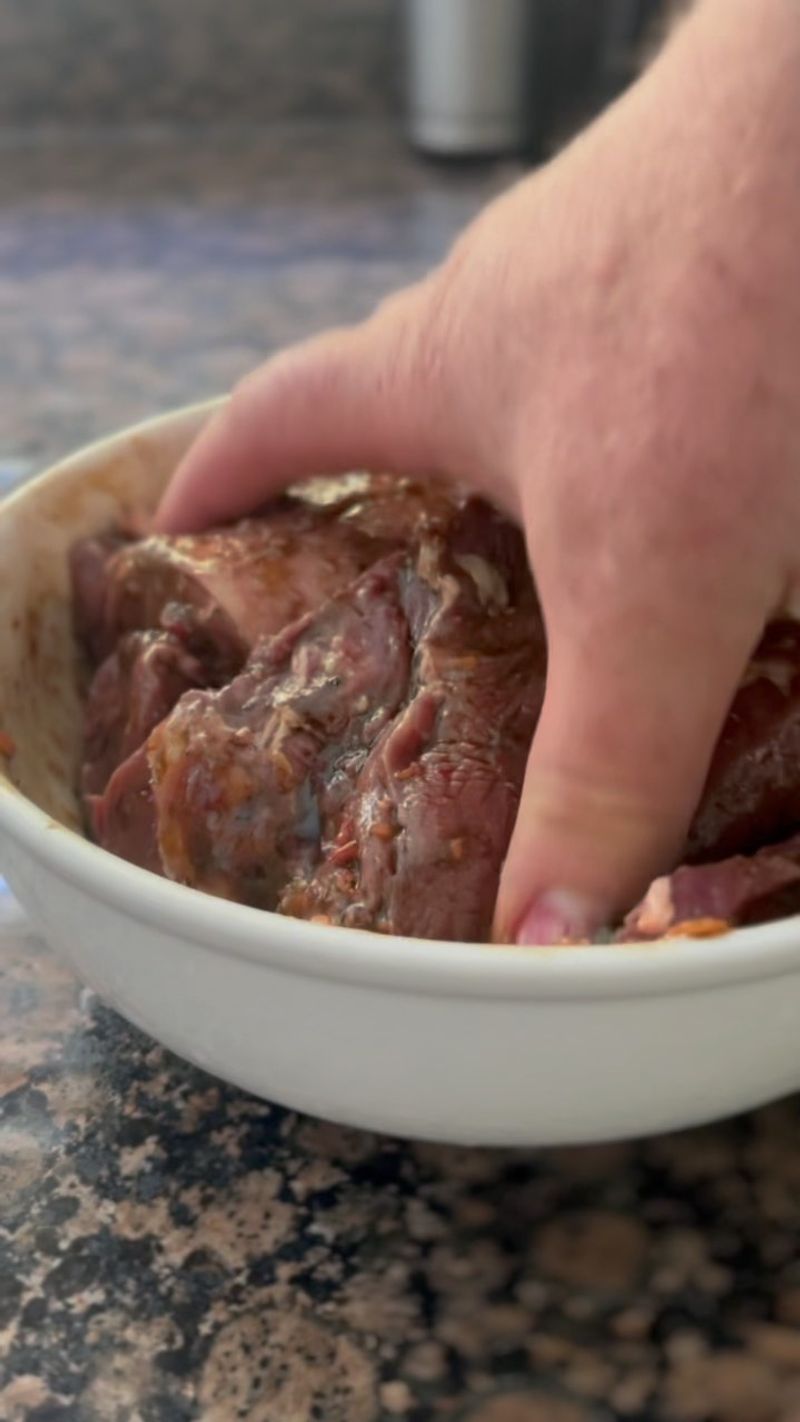
A slight dampness is normal, but a sticky or gooey film means bacteria may have started to grow. That’s a warning to avoid.
Touch isn’t always possible in-store, but if it happens at home, don’t second-guess. When in doubt, toss it out.
3. Strong Or Sour Odor
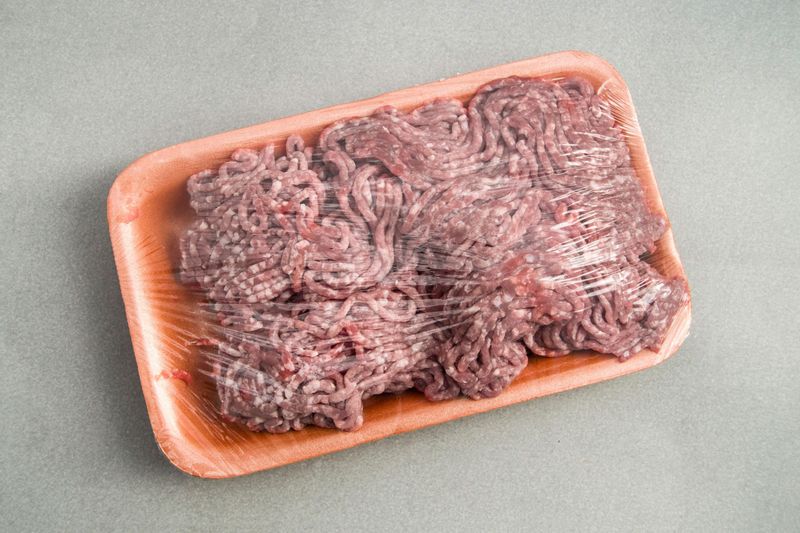
Meat should smell clean and mild. A strong, metallic, or sour scent is one of the clearest signs it’s no longer good.
Even vacuum-sealed meat can spoil if mishandled. Trust your nose—it’s better than any label when it comes to freshness.
4. Excess Liquid In The Package
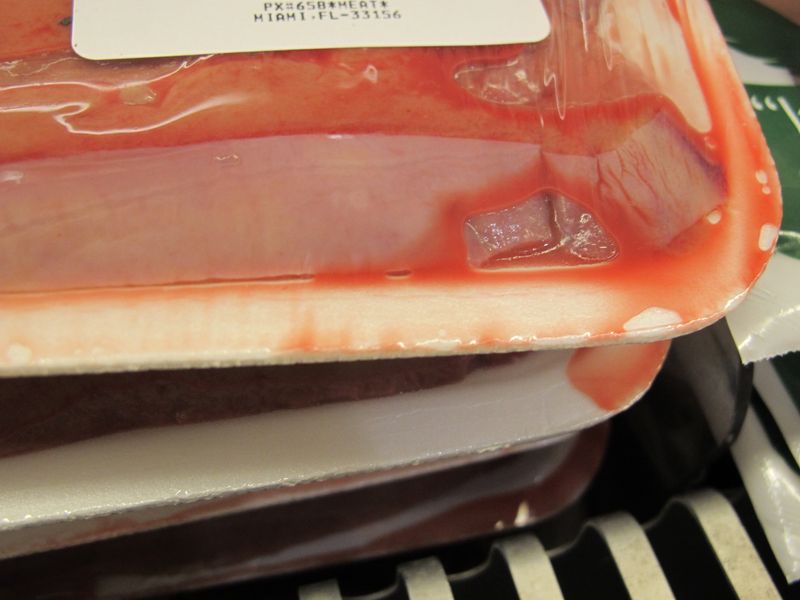
A pool of red or pink fluid can signal poor storage or defrosting mishaps. It’s often a sign of older meat losing moisture.
This “purge” affects texture and flavor. Look for cuts with minimal liquid, which hold juices better and cook more evenly.
5. Damaged Or Leaky Packaging
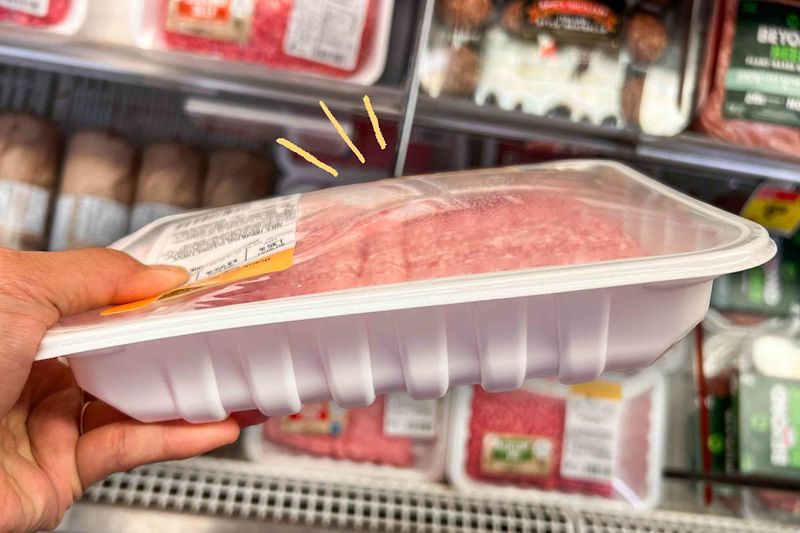
Broken seals and punctured wrap let air and bacteria in. This can turn a fresh cut into a risky buy fast.
Leaks also cross-contaminate nearby foods. Always inspect the pack before putting it in your cart, especially with poultry or ground meat.
6. Sell-By Date Too Close Or Passed
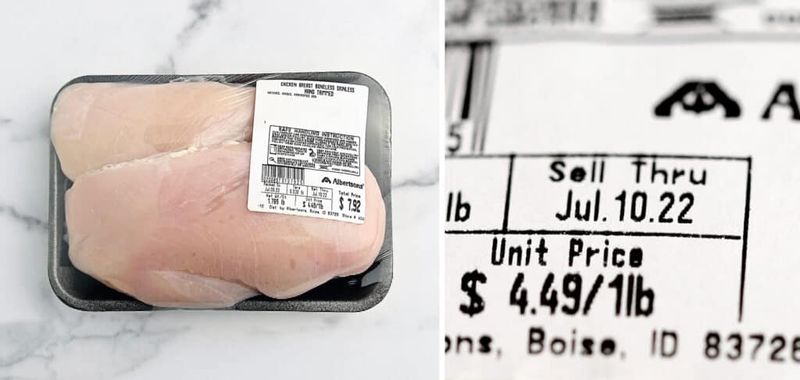
A near-expired package might be marked down, but it also means you’ll need to cook it immediately or risk waste.
Passed dates should always be skipped. Fresh meat should give you at least a couple days of wiggle room at home.
7. Frost Or Ice Crystals On Fresh Meat

Ice inside a “fresh” meat package often means it was frozen and then thawed. That affects taste, texture, and safety.
Crystals also indicate possible temperature abuse during transport. Meat should never refreeze after thawing unless explicitly labeled.
8. Pre-Seasoned Cuts With No Expiration
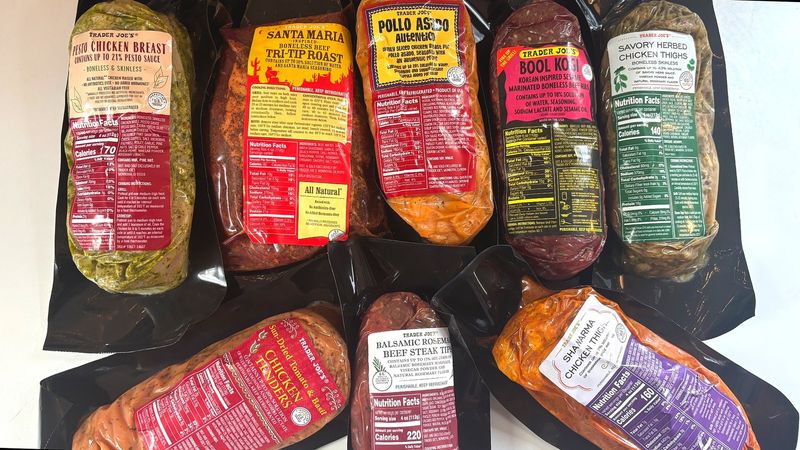
Marinated or seasoned meats often hide older cuts behind flavor and color. Without a clear expiration date, freshness is anyone’s guess.
Packaging should still list a date. If not, skip it—it’s not worth the mystery marinade.
9. Meat Stored Above Proper Temperature

Refrigerated meat should feel cold to the touch. If the display case seems warm, the internal temp may be too high.
Spoilage bacteria grow quickly above 40°F. If the fridge feels off, everything inside might be too.
10. Cloudy Or Fogged Vacuum Seals

A clear, tight seal keeps air out and freshness in. Cloudiness or puffiness signals gas buildup or compromised packaging.
Good vacuum-sealed meat should look taut and clean. If you spot bubbles or haze, leave it behind.
11. Ground Meat That’s Bright Pink All Over
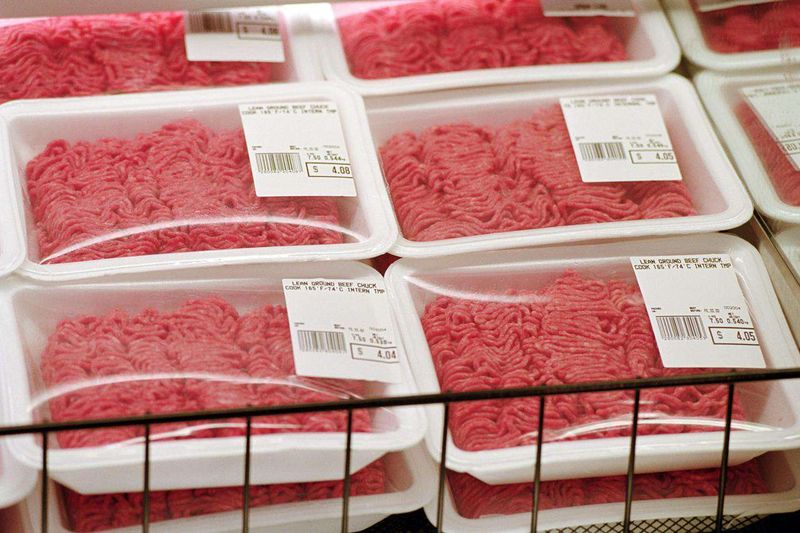
Uniformly pink ground beef might look fresh, but it could be gassed to preserve color, masking spoilage inside.
Natural beef darkens in the center. If the whole package is bright pink, ask how it’s treated—or avoid it entirely.
12. Discoloration Near The Bone

Meat darkening near the bone can be normal in some cuts, but green or gray streaks may suggest spoilage or bruising.
Fresh bone-in cuts should look clean and healthy. Strange hues near the joint are a solid reason to skip.
13. Discounts Without Explanation
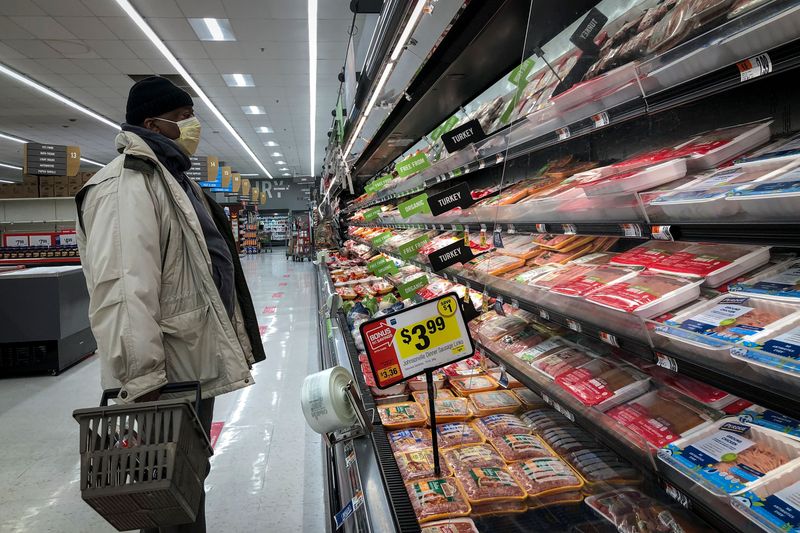
A markdown sticker can be a gift—or a trap. Without a reason, like nearing a sell-by date, it’s worth extra scrutiny.
If the discount seems random, check every detail: color, texture, seal, and smell if possible. A deal isn’t a deal if it goes bad.
14. Mixing Different Cuts In One Package
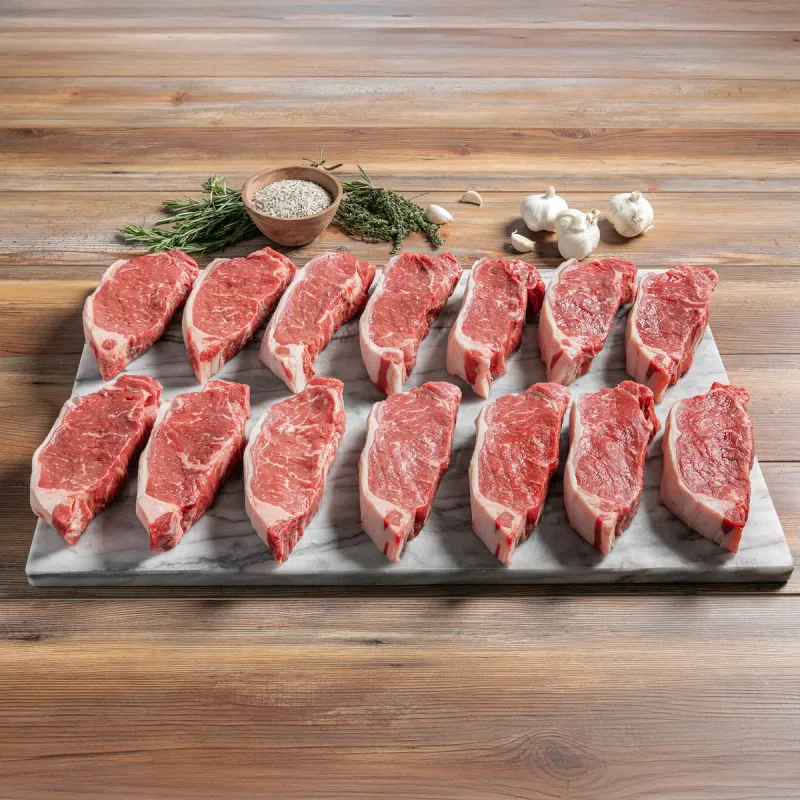
Blending cheap cuts with premium ones can trick shoppers into thinking they’re getting a better value than they are.
Each type of meat cooks differently. A mixed pack is hard to prep well and often masks lower-quality bits underneath.
15. Meat Labeled “Product Of Multiple Countries”
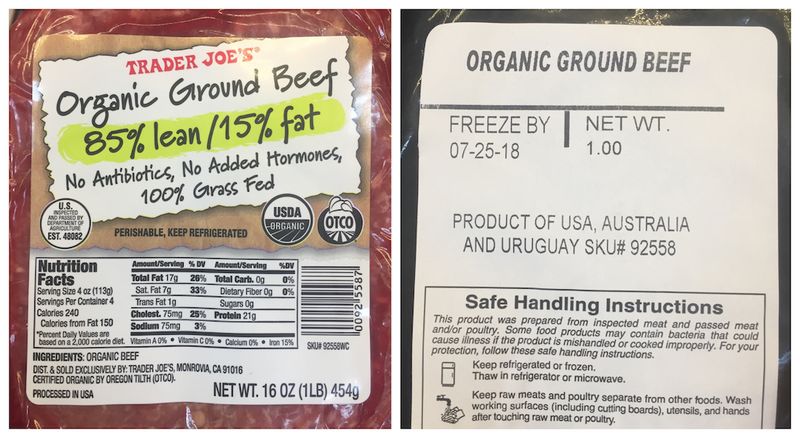
This label means the meat could be raised in one place, processed in another, and packaged somewhere else entirely.
Tracking quality or safety becomes difficult. For better traceability, look for single-origin labeling when possible.

